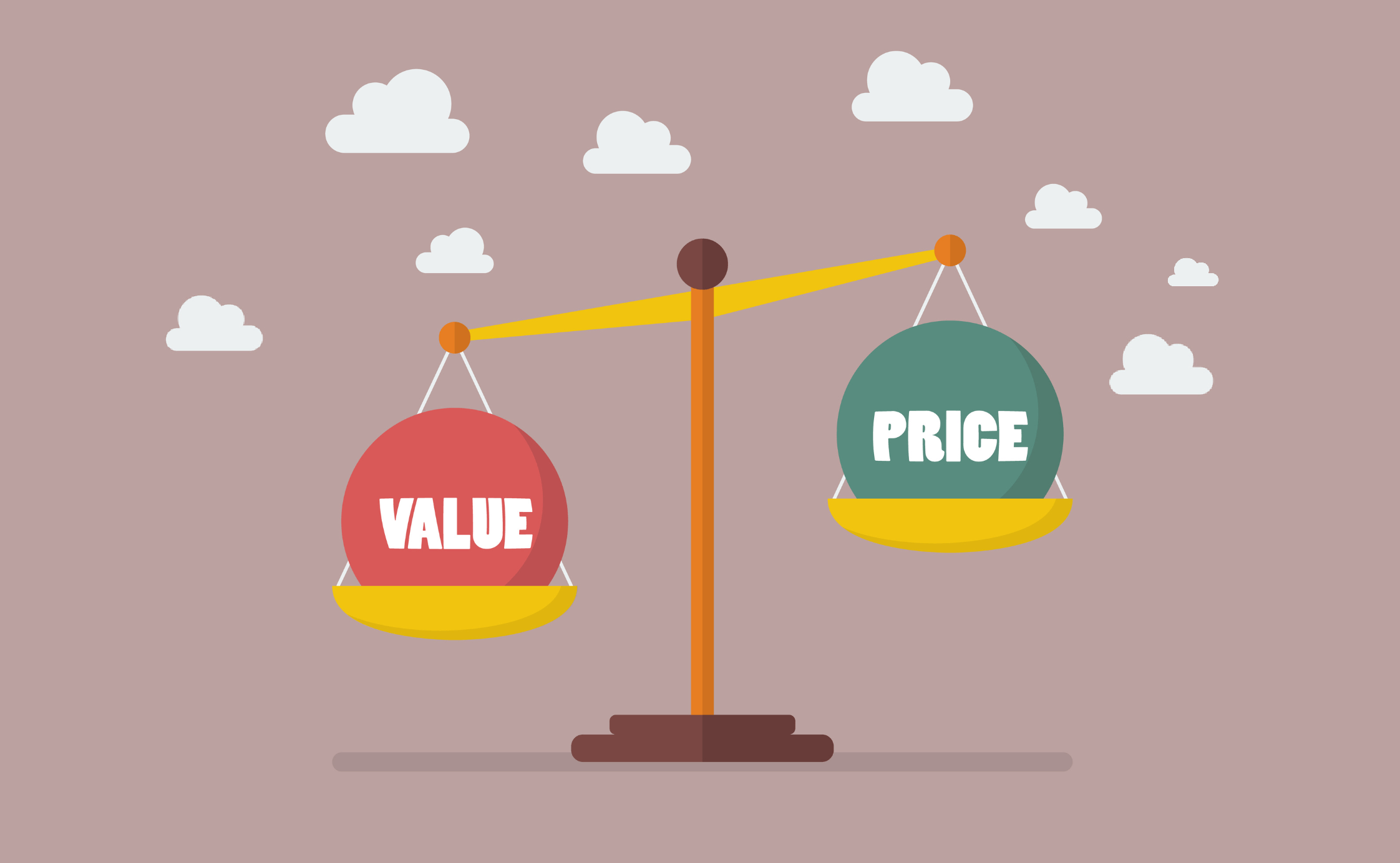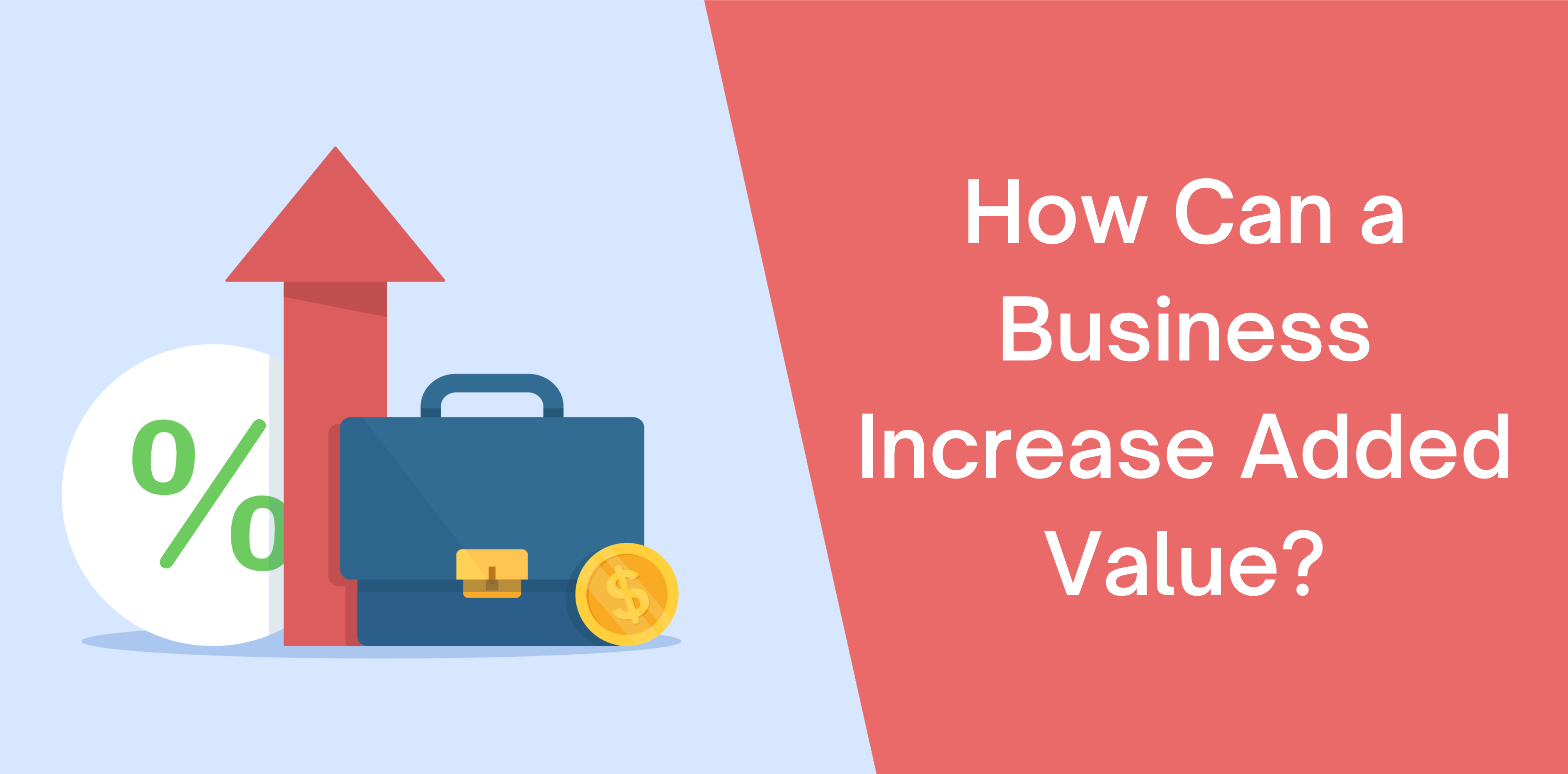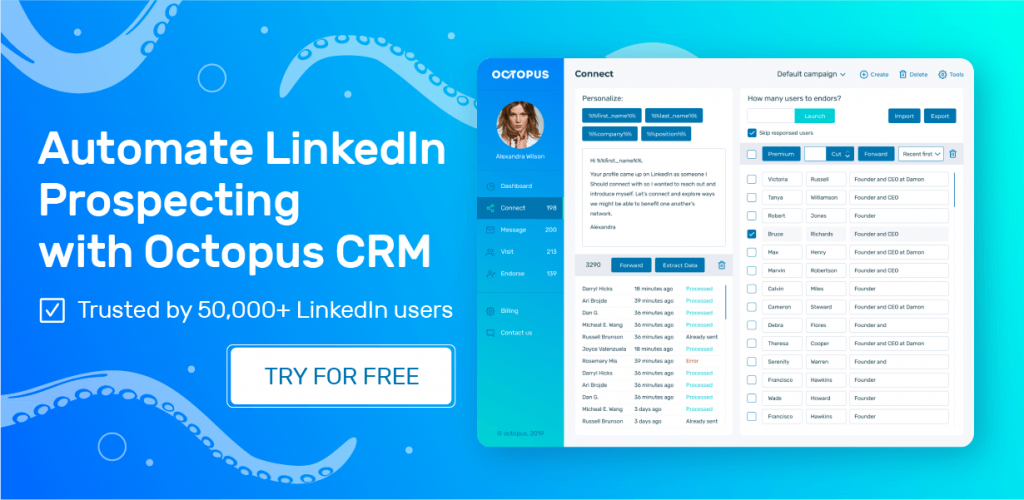Research reveals that 85% of buyers spend time surfing online before making a purchase. With customers becoming increasingly web-savvy and less loyal, marketers worldwide realize buyers will pounce on whichever brand offers the best deal.
Thus, if you want your business to grow and boost sales, you need to find a unique way to surpass your competition. You need to look for ways to increase the value of everything your company does, especially your products and services.
If you’re struggling to find the best ways to increase added value in your company, look no further. In this blog post, we’ll teach you:
- What added value means in the marketing sphere
- The ten secrets to increasing added value as a marketing strategy
- How and why you need to start value-added marketing
Let’s jump in!
What is Added Value in Business
Added value refers to the economic enhancement of a product or service as it passes through different production stages before reaching the customers. It may occur in various forms, such as adding extra features to a product or service to increase its perceived value or reducing the cost of an item to attract buyers.
Value-added explains how and why companies can sell their products and services for more than the cost of production. Adding value isn’t the same as offering free products or discounts; instead, it involves offering customers a product unique from what they were or can’t buy.
Furthermore, added product value gives buyers an incentive, thus increasing sales and improving your revenue and the company’s overall bottom line.
What Ways Can You Create Added Value?

Value-adding motivates customers to purchase your product or service. There are myriad ways a company can increase the perceived value of its products, including:
- Adding a well-known brand name to a generic product
- Offering features or add-ons to make the product cut through the noise
- Producing a product in an innovative and creative way
- Offering special incentives, such as free tech support, long-lasting warranties, or trial periods.
- Using a compelling copy sprinkled with alluring verbiage
- Attractive and personalized branding and packaging
- Eco-friendly products, sourcing, and packaging
How Can You Calculate the Added Value
Companies will have to use different formulas depending on your calculated added value. Here’s a look at the different ways of calculating value added:
Gross Value Added
Gross value added entails the economic contributions of a product or service in a particular region, sector, or industry. Here’s how you can calculate GVA:
® GVA = GDP + SP – TP
Where:
- SP = Subsidies on Products
- And TP = Taxes on Products
Economic Value Added
Economic value-added measures your company’s financial performance in terms of the incremental difference between its rate of return and cost of capital. You can calculate EVA by using this formula:
® EVA = NOPAT – (CE x WACC)
Where:
- NOPAT = Net Operating Profit after Taxes
- WACC = Weighted Average Cost of Capital
- CE = Capital Employed or Cash Invested
Market Value Added
Market value-added determines the difference between the company’s market value and the capital investors invest. The metric is instrumental for identifying the company’s ability to increase shareholder value.
You can easily calculate your MVA by employing this formula:
® MVA = V – K
Where:
- V = the Market Value (debt and equity)
- K = Total Amount of Capital Invested
Cash Value Added
Cash value-added measures how much cash your company generates through its operations beyond the cost of capital. Here’s how you calculate your CVA:
® CVA = Gross Cash Flow − Economic Depreciation – Capital Charge
Steps to Remember when Calculating Added Value
As we discussed, calculating added value depends on the value you want to measure. Here are several general steps to get you started:
- Determine the formula you want to use
- Insert the values in your selected formula
- Calculate the formula to receive an accurate answer
What are the Types of Added Value

Typically, businesses understand the value added in two ways:
Financial Value Added
FVA refers to the difference between the price a product or service sells for to the cost to produce it. Businesses calculate financial value added by using this formula:
Value Added = Selling Price– the Cost Spent on the production
For Example
Let’s say a dress sells for $60.00 but costs $25.50 to produce, then according to the formula:
® Value Added = $60.00 – $25.50
® VA = $34.50
Perceived Value Added
PVA includes the price of the product or service. Companies calculate the price of a product based on what customers will pay based on its perceived value o the item.
PVA might be tangible or intangible and consider only the perceived cost, not the actual cost.
For Example
A company innovatively assembles a generic product to increase its perceived value without increasing product prices.
As a result, PVA motivates customers to choose your product over competitors and boosts your bottom line.
Other Types of Value Added
Contrary to popular belief, financial and perceived value added are not the only types of value added. They also include:
- Quality Added Value – It entails adding the convenience, user interface, ease of use, and navigation that customers value. For instance, transforming commodities into branded products or enhancing features
- Environmental Added Value – EVA includes value added by employing eco-friendly manufacturing and packaging methods. For example, using less fuel, sourcing products ethically, ensuring a low carbon footprint, and using recycled packaging materials
- Cause-Related Added Value – The company contributes a particular amount of revenue from a specific product or service to a cause. For instance, businesses may donate half a percentage of their earnings to an orphanage, poverty campaigns, etc.
- Cultural Added Value – It comprises employing methods and systems of production that highlight cultural aspects. For instance, using a combination of regional languages to cater to a diverse audience
Why is Added Value Essential for a Business?
Every business must add value because they can make profits by adding value. Later, when the company keeps progressing and starts performing better than its competitors while maintaining its market position, it can gain more profits.
Businesses tend to satisfy the wants and needs of their consumers through the products and services they offer. These businesses make profits by adding value to their products and services. They process their input and add more value to the outcomes. Therefore, by doing this, companies can sell their products at higher prices than the investment they made while paying for the input. In a nutshell, companies have to add value to make profits.
Furthermore, businesses succeed in adding value to their products if the customers agree to pay more than what the companies have spent on the input. However, businesses must consider their competitors when creating value for their products and services.
When companies plan to maximize their profits, they must create a better value than their existing and outperforming competitors. Therefore, businesses must offer superior value creation to their customers. Then, the customers would prefer purchasing your products over your competitor’s.
Moreover, suppose a business can outperform its competitors and gain a higher profit rate as per return on invested capital (ROIC) than its competitors. In that case, the business gains a competitive advantage. In addition, if the company maintains it over time, it generates a sustainable competitive advantage.
Different Categories of Value-Added Benefits
Have you ever thought about the late time you won a competitive sales opportunity? What increased the scales in your favor?
In sales situations, it is challenging to differentiate your business solutions from your competitors. Therefore, businesses often win by offering customers extra services or value-added benefits. You offer your customers additional products with your primary service or products at additional cost to the customer. Here are some types of value-added benefits.
- Personal services: These are enhancements that businesses bring to an account. For instance, you make an urgent delivery. Some sales representatives tell their customers to get in touch if there is any problem.
- Consulting services: These are the services that businesses offer, such as providing your expertise on implementation. However, it is crucial to be careful. Since consulting services require an extensive time commitment, offering these services to high-potential accounts is advisable.
- Support services: These services are not provided by you but by your company. These services include 24-hour customer service, free training, and more.
- Promotional services: These services help the buyers to enable them to grow their business or do their tasks efficiently. Such services may include free samples, technical guides, advertising, point-of-purchase materials, and Job aids or tools.
Businesses can use these categories to trigger their thought processes and identify the value-added benefits they can offer to their customers. Moreover, any value-added benefit must relate to the customers’ needs. Otherwise, they will be unable to identify the benefits they gain from the products.
What are the Benefits of Added Value?
Creating value or added values offer multiple benefits to the companies. Some of the benefits are as follows:
More profit

The value a business adds to its profits should be directly proportional to its profits. Therefore, the more a firm adds value to its products, the more customers will pay. Thus, adding value allows companies to charge higher prices for their products and services.
On the other hand, if businesses fail to offer value-added benefits, customers will not purchase the company’s goods. Instead, they will prefer purchasing competitors’ value-added products.
If companies charge higher prices, they earn high-profits margins leading to more profits. For example, a company purchases bauxite and processes it into aluminum plates. The cost of bauxite is comparatively lesser than the price of aluminum plates. Furthermore, it will become more valuable when the plates are processed into airplane and car frames.
Another example to understand the concept is cotton. When a company processes cotton into yarn, it generates higher added value. Furthermore, it can become a rewarding business if it turns into clothing.
Cost-efficiency
Let us assume a company introduces a successful product in the market. Customers see that the products are offering superior value. Customers will more likely purchase the products and recommend the company’s products to their family and friends for the same reason.
If the company offers superior value products long-term, it can lead to stronger customer relationships. Moreover, the company will gain loyal customers. Later, customer loyalty will save the company’s advertising and promotional activities costs when it launches another new product in the market.
Without spending dollars on promotional activities, the company will attract existing customers to purchase its new products because they trust the business. Furthermore, loyal customers will likely promote and recommend new products to others. Therefore, with the exact promotional costs, the company enjoys more profits.
Stand out from competitors’ products
Companies can add unique features to their products to create added value. Adding special features to products and services will allow them to stand out from their competitors. Companies can charge a higher price when they offer uniqueness through their products. However, it is crucial to attract customers to purchase the products at a higher price.
Another effective strategy to stand out in the market is to offer lower prices on the same products than the average competitor. For example, the company’s products may have similar features to its competitors. However, since the company is offering a lower price than its competitor company, people are more likely to purchase its product over its competitors.
Even if the price is lower than the competitor’s, the company still makes profits if the production costs are lower than its competition. In other words, if a company can maintain a lower cost structure than its competitor, it can make more profits. This strategy is called cost leadership.
The company generates added value and focuses on unit costs instead of selling prices. However, cost leadership has a lower profit margin than the other strategies; therefore, companies must sell more products to make more profits.
Growing market share

Businesses have to generate added value to grow their market share. By generating added value, companies can retain existing customers to remain loyal. Moreover, they can also maintain the existing market share.
Moreover, it is a pull factor. The company can outperform its competitors because it adds value to its products. The company also attracts new customers through promotional activities and recommendations from existing customers.
Lastly, the company can sell more products since it has a vast customer base. Therefore, it automatically increases its market share.
Positive association
Customers pay for products not only because of the functional benefits but also for expressive and emotional benefits. Customers tend to spend more on a product or service they feel fits their styles or generates positive association.
Let us assume a company introduces a luxury item. The higher the price, the more satisfied the customer is when they purchase the item. The product’s high price has increased its status and image.
Therefore, positive associations influence customers buying strategies. Customers with sustainability principles will only purchase products that suit their needs. Therefore, businesses must consider this aspect and adapt it to meet their customers’ requirements.
Improve customer equity
Businesses can increase customer equity by developing strong relationships. Customer equity represents the total lifetime value of the company’s customers. Therefore, long-term relationships motivate existing customers to purchase the company’s products. A company that succeeds in doing so will continue generating money in the long run.
Moreover, the company will increase money flow by expanding its customer base. If the company adds superior product value, it will force the competitor’s customers to switch the company.
How is the Added Value Shared in the Market?
Two categories make up the additional value from a company’s overall perspective.
- The value-added of the goods and services created and sold.
- The human added value in product production, design, and promotion.
Increase Added Value of Your Business [Tips]
The following are the main areas you should concentrate on if you want to add value to your business.
Be a customer
You could sign up as a client to learn more about your company’s operations. Finding out what your consumers experience firsthand could provide suggestions for process improvement.
Consider improving how to prepare well for customer interaction and identify what they could want from your business, regardless of whether you work for a company where you deal with customers randomly or during scheduled meetings. If you work in a video game store, for example, you might get to know more about the customers you’ll deal with and their requirements. You might research the people you regularly assist in determining how to help them more effectively in the future.
Encourage faster production
If you can find ways to generate work more rapidly, you’ll be able to add value to your firm even though, in theory, faster production shouldn’t result in worse quality. Imagine you work in a factory making coolers on a machine you command, but you find a few ways to speed up the procedure. When you present your suggestions to your supervisors, they agree to alter the current procedure, allowing you to produce goods more quickly and earn more money.
Prioritize quality

Enhancing your items’ quality is one way to give your customers additional value. You might need to change vendors or make an additional investment to accomplish this. To keep prices as low as possible for small businesses, you may also consider purchasing wholesale.
Of course, you don’t want to risk your company’s net profit. Businesses occasionally raise prices while improving the quality of their goods or services. If you want to do this, emphasize the value you are providing them to justify your price increase. By raising the quality of your goods or services, you might notice a severe decline in speed.
Improve margins and cash flow
Being profitable on paper is not nearly as tempting as being good with cash on hand because cash is still king. Without paying attention to margins and free cash flow, optimizing your business’s value is impossible.
Buyers desire free cash flow because it enables business growth. But avoid confusing free cash flow with revenues. Millions in revenue can be offset by millions in expenses, leaving you little free cash flow. For a buyer, cash signifies steadiness, which is quite valuable.
Submit high-quality work
Ensuring you produce high-quality work is an excellent way to enhance your employer’s offerings. It can lead to compelling material for a client in the advertising industry or ensure the equipment you’re producing has fewer flaws. To deliver high-quality work, you need to put in a little extra effort to become aware of mistakes you would typically make in your work and meet the expectations of your customers and company.
Make a unique product
Share the unique selling points that set your goods or services apart from the competitors. Customers may choose your brand over one offered by another business that provides a comparable product or service if you have distinctive qualities or offerings—conduct market research to find out where there is a need for something special that you can give.
What is Added Value in Marketing?
The goal of added value marketing, often referred to as customer-centric marketing, is to give the best value possible for each customer’s distinct wants and needs. It prioritizes the consumer’s demands over those of the product or brand. The value may be monetary or non-monetary. In the coming years, value-added marketing is likely to gain significance.
There are plenty of reasons to use value-added marketing techniques to expand your company and attract customers. The fact that traditional marketing is growing more expensive and less effective as the demand for advertising space rises is one of the most significant reasons for switching. Due to its lack of prospect-specific personalization, traditional marketing is likewise losing favor with many consumers and seeing a decline in conversions and impact.
However, added value marketing is a fresh and attractive approach to advertising that promotes a better marketing environment and prepares sellers for engaging in value-based discussions. It helps companies build stronger, more enduring ties with their customers and maintains brand community engagement. Customer-centric marketing facilitates client retention.
Over time, it will gain your company, priceless brand advocates. Rightly executed value marketing will lower advertising costs while raising your return on investment (ROI).
Conclusion
You can ensure your company is working for future success by devoting time to marketing and value-added tactics. You can lay a strong foundation for your business’s long-term success with a bit of research and work.

